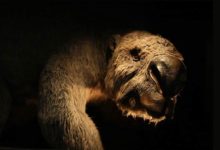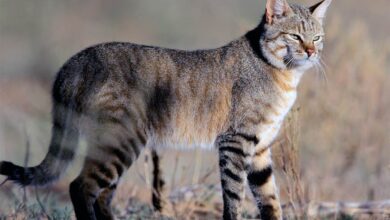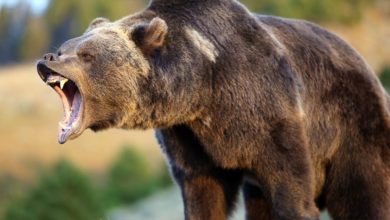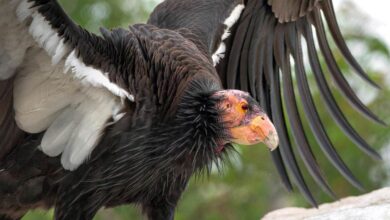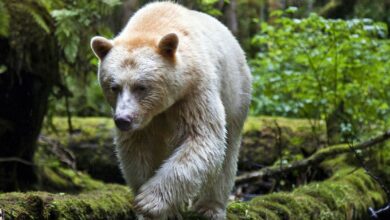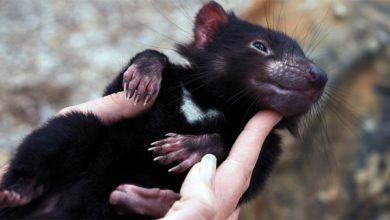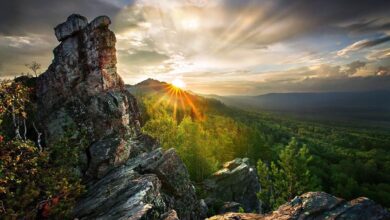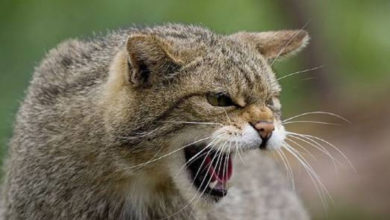Badger (Meles) – an omnivorous animal
It mainly lives in Eurasia where it is considered the hunter animal. It leads the nocturnal lifestyle with its family, which consists of parents and the young. In Europe, it is the animal, which indicates that the spring is coming.
Classification
- Kingdom: Animalia
- Class: Mammalia
- Order: Carnivora
- Family: Mustelidae
- Genus: Meles
- Species: Meles meles

The badger subspecies
- M. meles arcalus – the badger subspecies coming from Crete
- M. meles canascens – one of the smallest badger species living in Middle Asia.
- M. meles heptneri – a big species similar to the Asian badger
- M. meles marianensis– the badger living in the Iberian Peninsula
- M. meles meles – a very big species of the badger, it reaches the weight of 24 kg (53 lb) in spring
- M. meles milleri – a small badger coming from southwest Norway
- M. meles rhodius – the species coming from the Island of Rhodes
- M. meles severzovi – a small species; stripes on its head go over its whole ear.
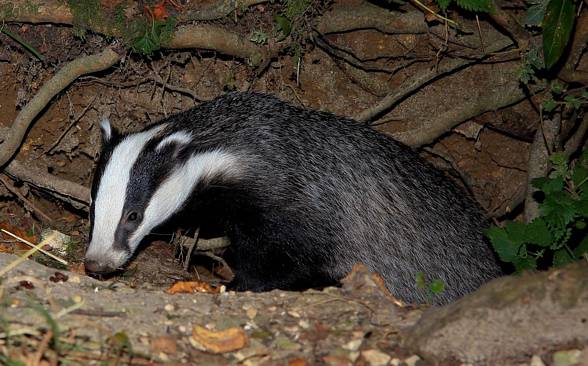
Distribution
Nowadays, badgers can be seen in Eurasian forests (e.g. all over Poland). It lives in mixed and deciduous forests with the characteristic rich underbrush, which is the layer in the woody ecosystem consisting of bushes such as the viburnum, the hawthorn, the hazel, the bird cherry, the rowan or the elder.
Its favorite territory should be watery or close to waterholes. It is also easy to notice badgers in old and big orchards where it is possible for them to find numerous lodges (dens, burrows between buildings). In mountainous areas, badgers appear till around 2,000 m (6,562 ft) above the ground.
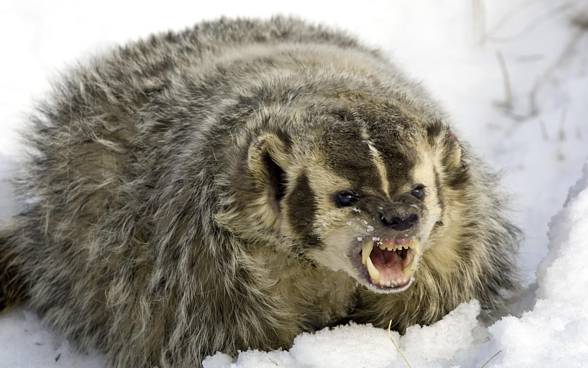
Name
This animal used to have a lot of folk names many years ago. It was i.e. ‘brock’, ‘pate’, ‘grey’ or ‘bawson’. Slavic people names it the badger, which is the word derived from ‘jazwa’ meaning the lodge or the wound. Its present name-‘the badger’ comes from the XVII century. It is derived from the Tatar and Turkish language.
Nutrition
The badger’s diet is everything, which surrounds its place of habitation, from different types of plants to animals. It can be humorously named an omnivorous animal. However, it gets most nutrients from earthworms and other small insects, small mammals and birds, the carcass, grains and fruit. Out of mammals, the badger prefers most the hare, rats, mice, voles, shrews, moles, hedgehogs as well as cats or rabbits. As far as insects are concerned, the badger chooses beetles (carabid and dung), caterpillars, daddy-long-legs, bees and even bumblebees.
Most favorite badger’s grains are wheat, oats, corn and barley. Out of fruit, it picks up ripe apples, pears, plums, blackberries, whortleberries, raspberries, strawberries, acorns and beech mast. From time to time, it happens that it eats birds having their nests on the ground, frogs, toads, newts, snakes, lizards, snails, mushrooms, grass and clovers.
It cannot be denied that the badger is omnivorous.
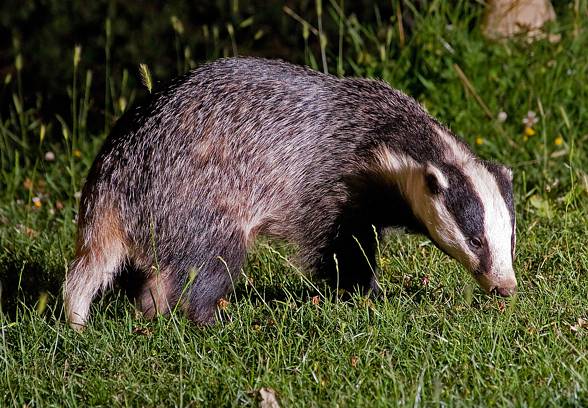
Reproduction
Badgers reproduce from February to October but the coupling usually happens in August. When the male wins the furious fight for entering the female’s sett and accepting its potential partner, the female which gets pregnant, banishes the male out of its sett.
In case the environment conditions are not hospitable for the female badger, the fertilized eggs can nestle later up to around 7-15 months.
After implanting the germ into the wall of the uterus, the pregnancy lasts from 7 to 8 weeks. The number of the young does not usually exceed 5. Before the birth, the female prepares the special lodge in which small badges must stay for about 8 weeks. Mother breeds the young with its milk until they are 4 months old.
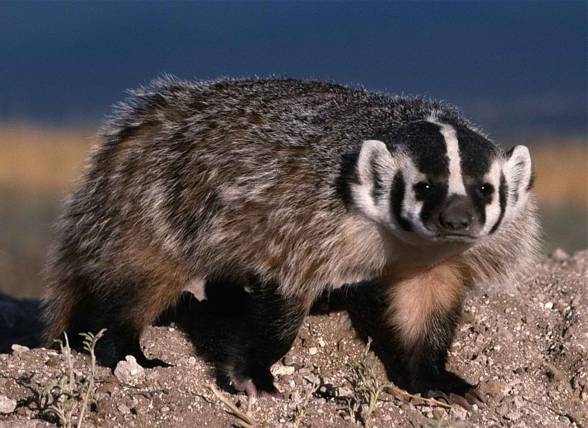
The badger’s sett
These animals lead the nocturnal lifestyle. They spend all days in burrows, which have a very complicated construction, but at night, they go hunting. To get to the main chamber, badgers must go through many winding and intricate corridors. From the outside, entries to them are far away from each other. Comparing with the fox lodge, badges are extremely tidy. They throw away all filth out of their sett.
Badgers dig small dimples called latrines where they defecate.
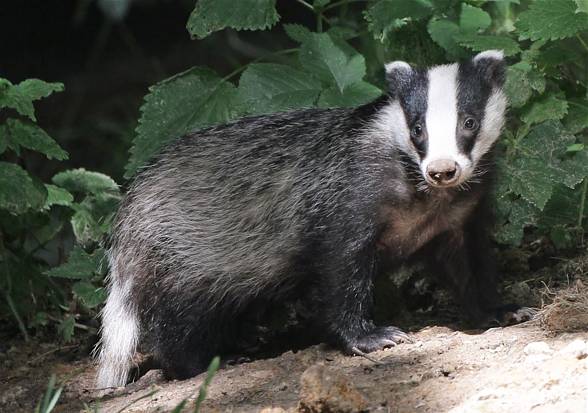
Badgers are extremely attached to their sett and they build them with great involvement. They do not only have ventilation openings, a few bedrooms but they are also situated on a few floors. The same sett is often inhabited by the next generations of one badger family. Badgers begin the winter sleep with the winter onset. It does not last continuously because on warmer days, they leave their sett to appease the hunger and the thirst.
During the winter sleep, the badger loses about 7 kg (15.4 lb) of weight releasing the energy out of accumulated fat reserves.
Before it falls asleep for winter, it gathers the supply of dry leaves, grass and moss to pad out its den and to protect the entrance to corridors. It is even said that every badger prefers completely different kinds of bedding – from beech leaves to fern leaves or grass.

The territory
Without exception, all badger family has its own designated territory and its size depends mainly on the amount of food but it ranges from 1 to 30 square km (0.4 to 11.6 mi2). Badgers mark their territory with feces or the secretion of glands.
Protection
Badgers are not endangered because of their lifestyle and have little hunters’ interest. Nevertheless, people kill them very often because they carry rabies. They can be hunted from 1 September to 30 November. However, within hunting borders where the capercaillie can also be seen, hunting for badgers is possible all year round.
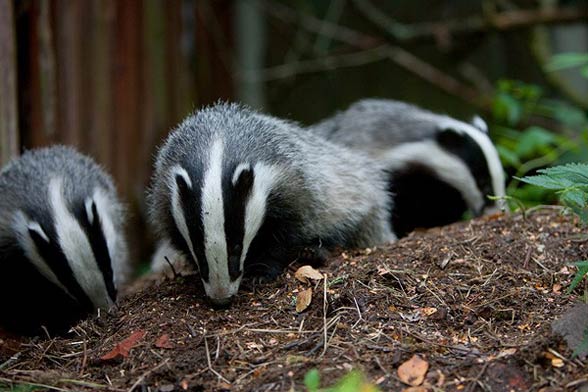
Detailed information and size:
- Body length: 60-90 cm (23.6-35 in)
- Height: around 30 cm (12 in)
- Weight:
- in spring around 7-12 kg (15.4-26.5 lb),
- in autumn around 15-17 kg (33-37.5 lb)
- the biggest species are up to 24 kg (53 lb)
- Lifespan: 15 years in the wild

The badger – interesting facts
- Young badgers are blind.
- When the environment is not hospitable for a mother, the fertilized germ can implant in the uterus 7-15 months later.
- During the winter sleep, badgers lose around 7 kg (15 lb) of weight living on the fat accumulated in its body.
- Badgers are omnivorous animals.
- They are killed by humans because they carry rabies.
- They lead a nocturnal lifestyle.
- They live with their family – parents and the young.
- Badgers defecate to special dimples called latrines.
- They take care of cleanliness in their burrows – they throw out all the impurities.
- Their natural enemies are wolves and lynxes.
- Their appearance is thought to be the symbol of the spring onset.
Recommended
- Ratel
- Persian leopard
- Amur leopard
- Siberian tiger
- Bengal tiger
- Sumatran tiger
- Indochinese tiger
- Malayan tiger
- South China tiger
- Tigers
- White tigers
- Lions
- White lions
- Lion vs tiger
- Liger
- Lynx
- Canada lynx
- Margay
- Serval
- Ocelot
- Animal fights
- American lion
- European cave lion
- Smilodon – Saber-toothed tiger
- Fights of animals
- Big cats
- Black panther
- Leopard
- Snow leopard
- African Lion
- Fastest animals
- Fastest birds



